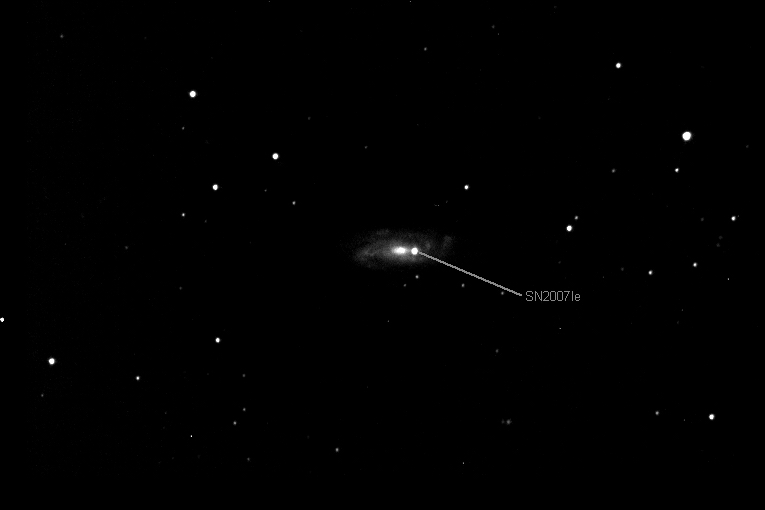Projects -Tom












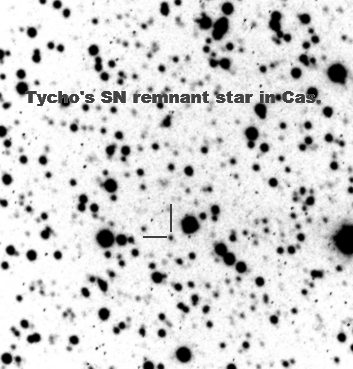 ABOVE:
Is an image of the Tycho Super Nova remnant in Cassiopia taken with my
Celestron C8 at its f/10 Cassegrain focus. This image is a
composite of (4)180 second exposures.
ABOVE:
Is an image of the Tycho Super Nova remnant in Cassiopia taken with my
Celestron C8 at its f/10 Cassegrain focus. This image is a
composite of (4)180 second exposures.
A must read is my published supernova article in the
photos and papers page:
MORE IMAGES BELOW:
BELOW LEFT:
SN 2004eo located in the galaxy NGC 6928 of the constellation
Delphinus. This galaxy is not far from the very nice globular cluster NGC 6934 which can be seen on a dark night with good binoculars.
If it were not for the supernova, this little galaxy would certainly not be a must return to target for the average amateur. Delphinus is
not noted for its galaxies.
Supernova 2004eo was discovered by Koichi Itagaki on September 17, 2004.
It is a type Ia, and was located some 59 arc sec from the galaxy's nucleus in RA and 6 arc sec in Declination. This image was taken
when the supernova was at magnitude 15.6 with my .2m @ f/5.6. The camera used was a ST7XME.
BELOW RIGHT:
SN 2004et located in the galaxy NGC 6946. Discovered on September 27, 2004 by Stefano Amoretti. This type II supernova is
one of the only few core-collapse supernova whose progenitor has been directly identified. Seemed like a good year for supernova, 2004,
with a count of about 250. 66 were in NGC&IC with 126>18mag. Actually the count was down from 2003. Again, this image was taken
with my .2m @ f/6.3 through the ST7 when the star's remnant was at magnitude 12.9.
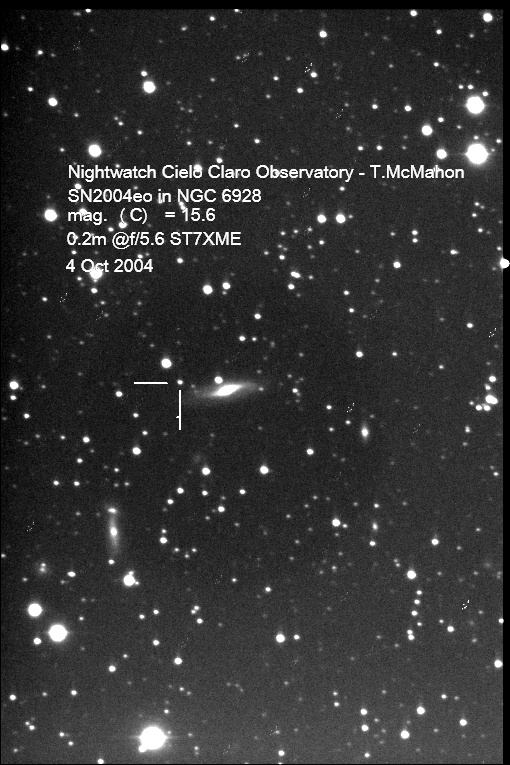
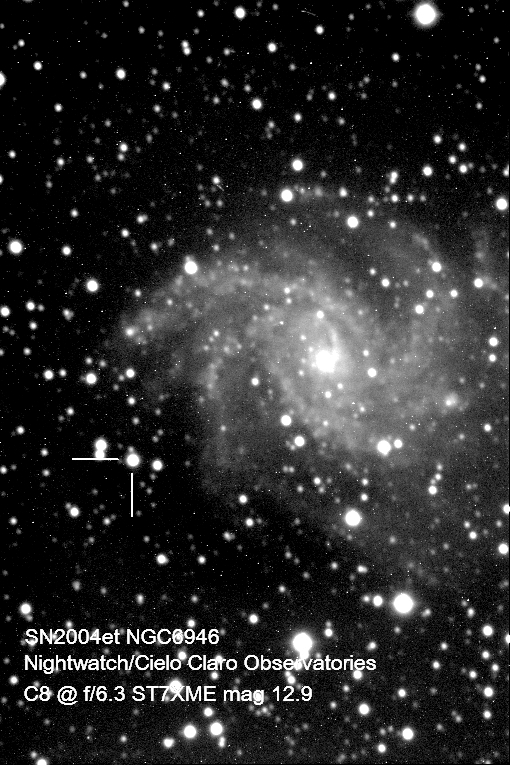
BELOW LEFT: SN 2006bp in NGC 3953. Discovered by a very busy Koichi
Itagaki. This supernova marked number 17 in Koichi's national list
of discoveries. The galaxy is located in Ursa Major.
BELOW RIGHT: SN 2002ap located in the galaxy M74 which lies in the constellation
of Pisces. M74 is a very nice face on type Sc galaxy some 20
million light years distance. Which means ... what I imaged this
night happened 20 million years ago. M74 is one of the galaxies
Lord Roses sketched in 1861 with a nucleus strongly resembling an
unresolved globular cluster. This lead to the object being wrongly
called a cluster in Dyer's New General Catalog. SN 2002ap
is a probable hyper nova. A hyper nova is possibly one the most
powerful explosions in the universe ... since the big bang that is.
Discovered by Japanese astronomer Yoji Hirose on January 29, 2002, and
imaged by me of February 02 with my C8 @ f/1.9. The image was 300
seconds, and the camera was a ST237.
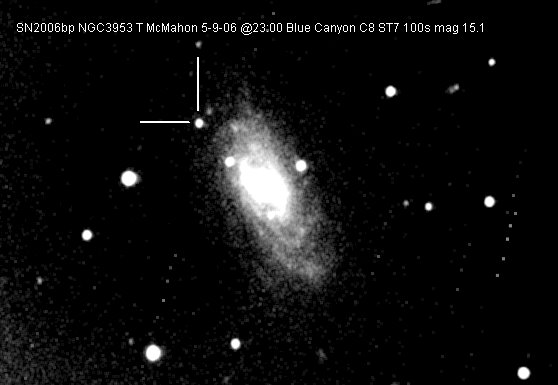
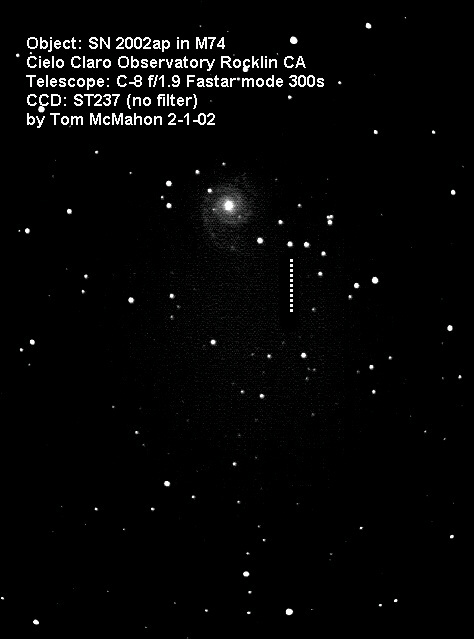
BELOW IMAGE: SN 2007le
